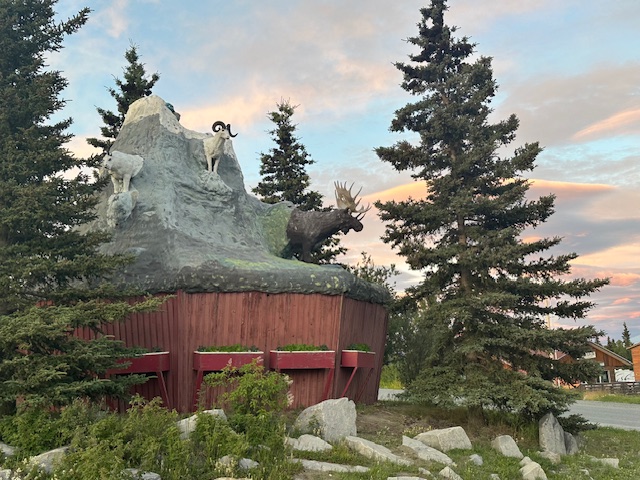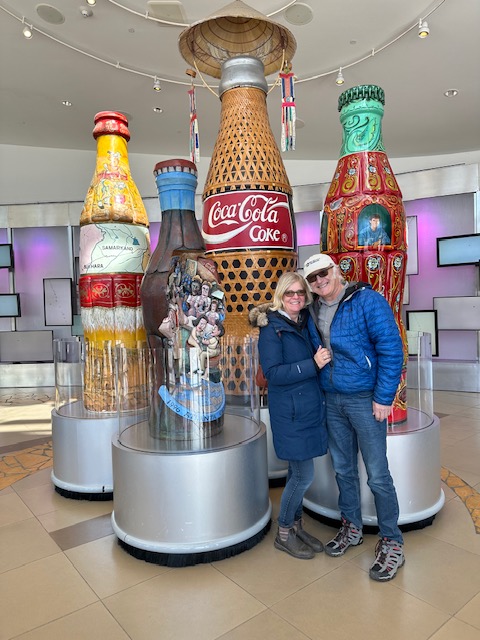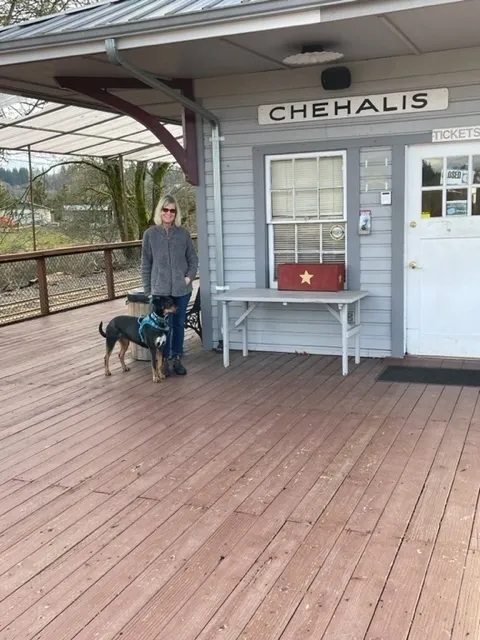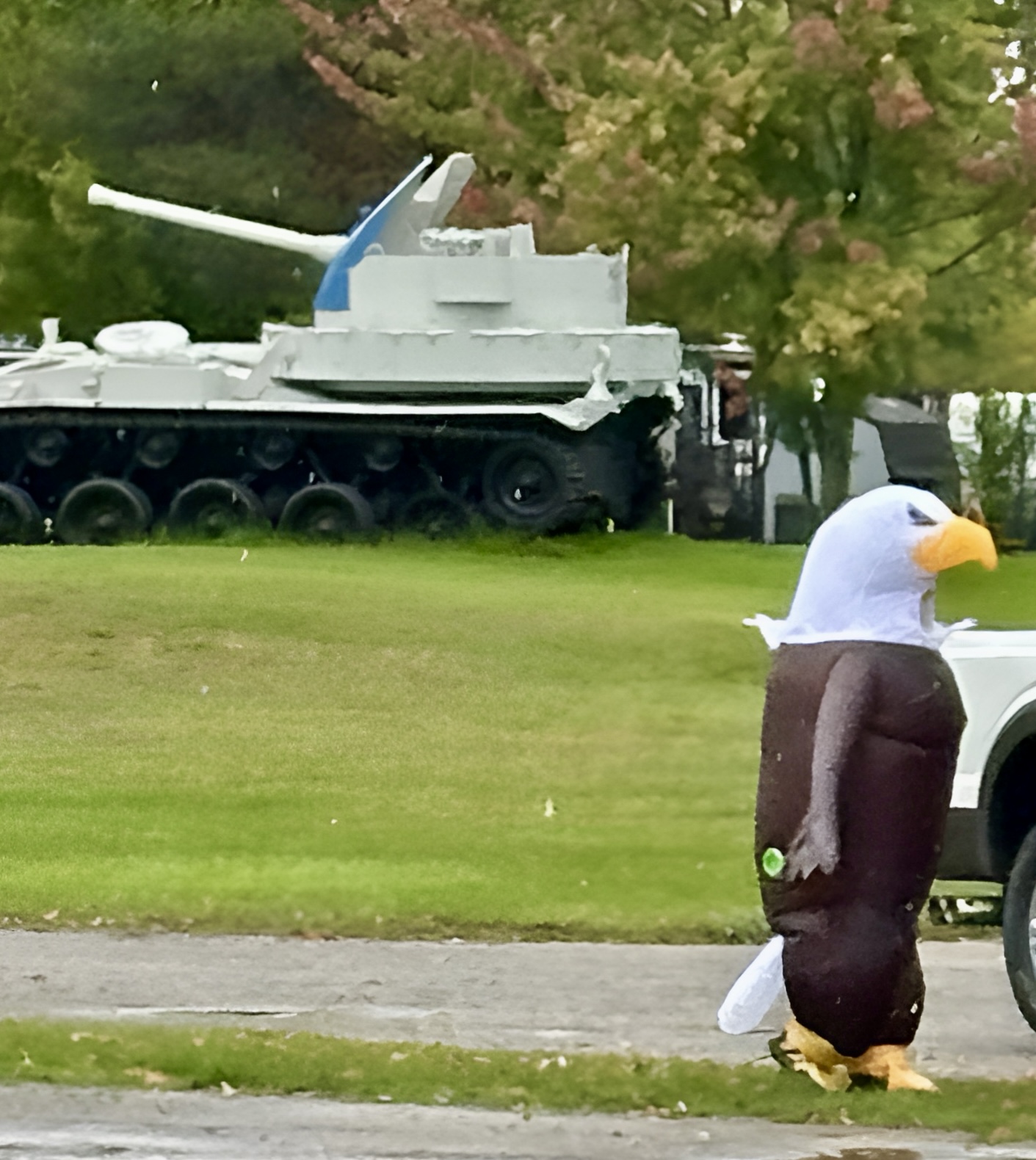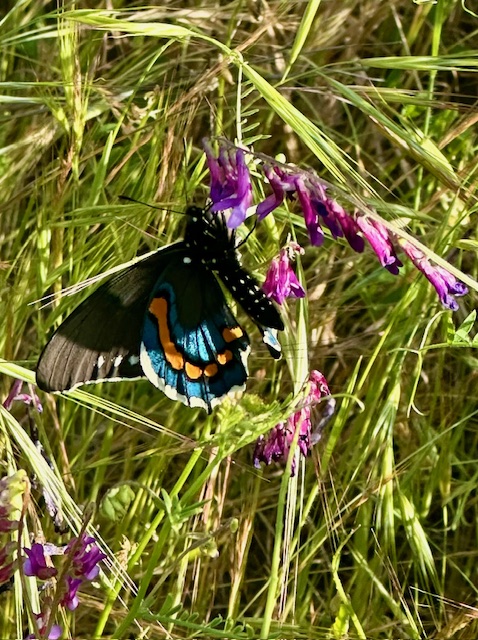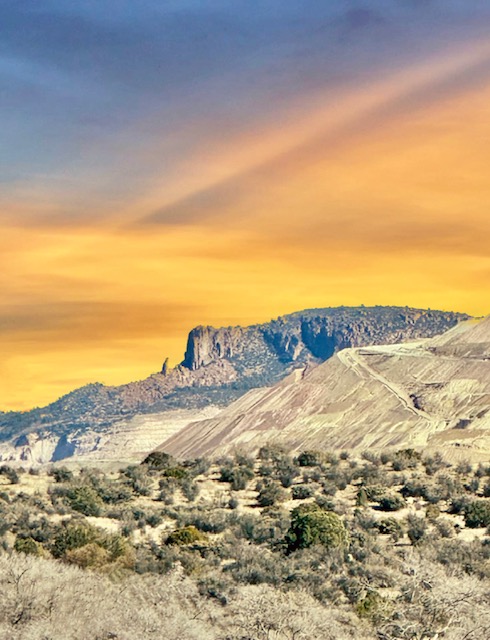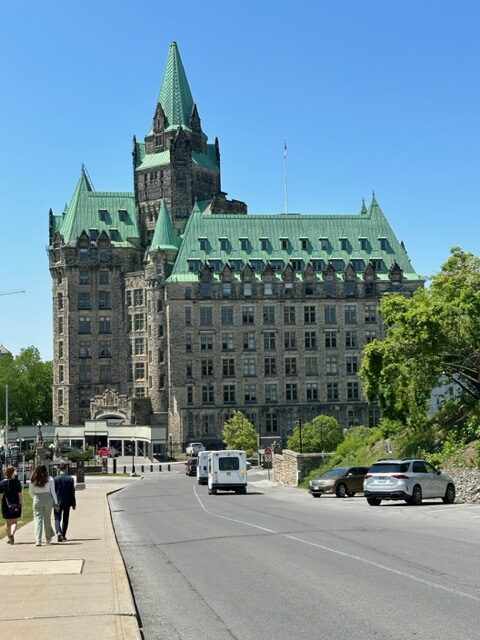Takhini Hot Springs to Haines Junction, Yukon – 7 July 2024
Coming into Haines Junction you are presented with this incredible view of the Kluane Range mountains. Our campsite was just a gravel area behind a Chinese American restaurant but at least it had all the utilities. The mountains are part of the eastern range of the Kluane National Park and Reserve and part of the larger St Elias mountain range. Beyond these peaks to the interior of the park are Icefields and Canada’s highest mountains, including Mount Logan which is 19,545 ft. We are getting used to the 21 hours of sunlight and felt quite safe walking down to the main road at 11.30 pm and took some photos of the amazing orange and pink sunset.
We went for a very pleasant flat walk along the Dezadeash River Valley which had great views of the Auriol Range and nice boardwalks and interpretive signage along the way. There were bear signs everywhere and while I enjoyed the walk, I did feel very unsafe walking through the forest conscious that this area is very much bear country.
One thing very unique about Haines Junction were all the Cliff swallows. There was a large flock of birds circling underneath the eaves of a nearby building and I discovered a number of mud nests with little birds peeping out of them. There was a high level of activity with birds flying in and out of the nests. As I walked around the building I saw many more of these nests tucked away high up. Cliff swallows are extremely social songbirds that can be found in large nesting colonies reaching over 2,000 nests. They build their gourd shaped nests out of mud with small entrance holes, tightly together, in some cases on top of one another, in sheltered spots.
While the birds can make quite a mess of public structures they are very valuable as they catch bugs especially mosquitoes. Therefore the council has erected a wooden habitation structure to redirect the nest building and protect the birds.
I also discovered a very unique and beautiful church just up the road from the campsite. It was constructed from a converted American army “Quonset Hut” in 1943. Quonset Huts were used at military camps during World War II. The former Quonset Hut was cut in half straight down the length. Between these halves were added an insert of windows that gave light and height to the building. Behind the church a small living quarters consisting of 3 small rooms were added. It is still in use.

